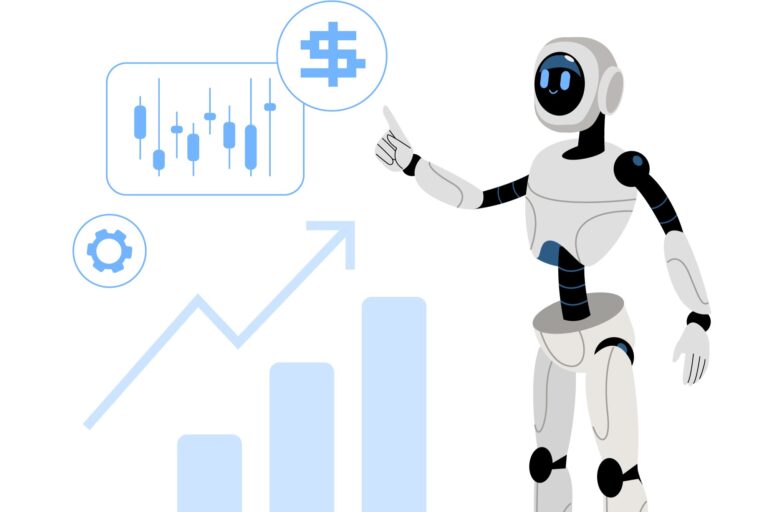Do banks use trading bots?
In the fast-paced world of finance, efficiency and accuracy are paramount. Banks, always on the frontier of technological adoption, have increasingly turned to automated systems to enhance these aspects. Trading bots, automated software programs that execute trades on behalf of human investors, are at the forefront of this transformation.
How Banks Utilize Trading Bots
Portfolio Management
Banks often oversee diverse and extensive portfolios that contain a wide variety of financial instruments, from stocks and bonds to derivatives and foreign exchange. Trading bots play a crucial role in managing these portfolios by executing trades based on predetermined strategies and real-time market analysis. This automation allows for dynamic portfolio adjustment, helping banks to maintain desired levels of risk and exposure while capitalizing on market opportunities quickly and efficiently.
Moreover, trading bots are instrumental in implementing complex trading strategies which would be too cumbersome or time-consuming for human traders to execute manually. These strategies may involve intricate timing and placement of a large number of orders at specific conditions, which can be done effortlessly by bots with a high degree of accuracy. This not only helps in maximizing potential returns but also aids in diversifying the risks associated with large-volume trading.
Risk Assessment
Risk management is a cornerstone in banking, where the ability to foresee and mitigate potential downturns is vital. Trading bots contribute significantly to this aspect by leveraging advanced algorithms to analyze market data and trends. They can detect anomalies or patterns that may signify potential risks, enabling banks to proactively make adjustments to their investment strategies. This real-time data processing helps in making informed decisions that align with the bank’s risk tolerance and regulatory requirements.
In addition to identifying risks, trading bots also help in stress testing portfolios under various market scenarios to predict possible outcomes. This kind of simulation enables banks to prepare and plan their responses to different financial situations, reducing potential losses. By automating the risk assessment process, banks can ensure more systematic and consistent risk evaluation, which is less prone to human error and bias.
High-Frequency Trading (HFT)
High-frequency trading is a technique used by financial institutions to perform a large number of orders at extremely high speeds. Trading bots are essential for this type of trading as they can process vast amounts of information and execute trades within milliseconds. This capability allows banks to exploit even the smallest market inefficiencies for profit, a task that is practically impossible for human traders due to physical limitations.
Furthermore, HFT requires precision and rapid execution that trading bots are uniquely equipped to handle. They operate with algorithms designed to start and close thousands of positions in a fraction of a second, capitalizing on quick price changes and arbitrage opportunities across different markets. The efficiency and speed of trading bots not only increase the profitability of high-frequency trading operations but also enhance market liquidity, which is beneficial for the overall financial market ecosystem.
Portfolio Management
Banks manage vast sums of money across various asset classes, including stocks, bonds, commodities, and currencies. To effectively manage these portfolios, banks rely heavily on trading bots, which are programmed to execute complex trading strategies. These strategies help in balancing the portfolios by:
- Continuous Market Analysis: Trading bots continuously monitor market conditions using algorithms that can interpret complex data sets much quicker than human traders.
- Execution of Trades: Based on the analysis, these bots make trades that align with the bank’s financial goals. This includes buying or selling assets to maintain an optimal balance of risk and reward within the portfolio.
The use of trading bots in portfolio management offers several advantages:
- Efficiency: Automates the trading process, allowing banks to manage more assets with less manual intervention.
- Speed: Executes trades at optimal times without delay, capturing the best market opportunities.
- Precision: Minimizes human errors in trading decisions, enhancing the overall performance of the investment portfolio.
Risk Assessment
In the domain of banking, effective risk management is paramount to both sustainability and profitability. Trading bots enhance this aspect by:
- Data Analysis: They can process and analyze vast amounts of market and transactional data to identify emerging risks before they materialize into significant threats.
- Proactive Mitigation: Based on the analysis, bots can execute defensive strategies such as hedging against potential losses or rebalancing the portfolio to reduce exposure to high-risk assets.
The proactive use of trading bots in risk assessment helps banks:
- Anticipate and React: Quickly adapt strategies in response to changing market dynamics or internal risk thresholds.
- Capitalization on Opportunities: While managing risks, bots can also identify and seize potential profit-making opportunities that align with the bank’s risk appetite.
High-Frequency Trading (HFT)
High-frequency trading (HFT) involves executing a large number of orders at extremely high speeds, and trading bots are indispensable for this method. They are specifically designed to:
- Process Information Rapidly: Trading bots can analyze incoming market data, execute orders, and adjust trading positions within milliseconds.
- Perform High-Speed Trading: They manage thousands of transactions per second, exploiting minor price differences and market inefficiencies.
Benefits of using trading bots in HFT include:
- Market Liquidity: By executing a large number of trades, these bots help in maintaining market liquidity, which is beneficial for the overall market structure.
- Profit Maximization: They utilize algorithms to capture fleeting profit opportunities that no human trader could physically realize.
Benefits of Trading Bots for Banks
Trading bots offer numerous benefits to banks, making them a vital tool in the financial sector. These automated systems not only streamline operations but also enhance performance in several key areas:
- Enhanced Efficiency
- Improved Accuracy
- Cost Reduction
| Benefit | Description | Impact on Banks | Examples |
| Enhanced Efficiency | Trading bots operate 24/7, continuously analyzing markets and executing trades. They can process and act on vast amounts of data much faster than human traders. | Maximizes trading opportunities by allowing banks to act swiftly on market movements, thus capturing profits that might otherwise be missed. | Overnight trading, real-time adjustments to market changes, rapid execution of large volume trades. |
| Improved Accuracy | Bots operate on algorithms and pre-set criteria, which eliminates the risk of human error and emotional decision-making. | Reduces the incidence of costly mistakes and maintains trading discipline, leading to more predictable and reliable investment outcomes. | Automated compliance checks, consistent application of trading strategies, elimination of manual entry errors. |
| Cost Reduction | Automation of the trading process reduces the need for a large trading staff, cutting down on salaries and related expenses. | Lowers operational costs significantly, allowing banks to allocate resources to other strategic areas such as technology development or customer service. | Reduced need for trading personnel, lower training and HR costs, increased scalability without proportional increases in staffing. |
Ethical and Regulatory Challenges
The integration of trading bots in the financial markets has ignited a series of ethical and regulatory challenges that continue to stir debate among stakeholders. The core of these challenges revolves around fairness in trading practices, particularly concerning high-frequency trading (HFT).
Regulators are increasingly concerned that without adequate oversight, trading bots may inadvertently create scenarios where market fairness is compromised. This could potentially result in a select few market participants gaining disproportionate advantages over others, which could skew market competition and integrity.
Moreover, as trading bots become more prevalent, regulatory bodies are tasked with the complex challenge of ensuring these systems do not contribute to increased market volatility. The speed and volume at which trading bots can execute trades have the potential to amplify market movements, both upward and downward. This has prompted regulators to examine how bots are programmed and to consider setting parameters that ensure market stability and transparency, such as imposing limits on trading speeds or volumes during volatile periods.
Security Risks
Security is a paramount concern when it comes to the deployment of trading bots in banking and finance. Since these bots handle significant volumes of transactions and sensitive financial data, they become prime targets for cyber attacks. If a trading bot is compromised, the consequences can range from executing unintended trades that cause substantial financial losses to leaking confidential client data, thereby jeopardizing client trust and the bank’s reputation.
The risks associated with cybersecurity are exacerbated by the complexity and autonomy of trading bot operations. Banks must ensure that robust security measures are in place to protect against hacking attempts and to secure the data that these bots process. This involves not only implementing advanced security technologies but also continually updating and patching systems to guard against new vulnerabilities as they emerge. Regular security audits and adherence to stringent cybersecurity protocols are essential to mitigate these risks effectively.
Dependence and Overreliance
The convenience and efficiency of trading bots can lead to an overreliance on automated systems, posing significant risks for banks. This dependence becomes particularly problematic when bots are tasked with handling complex decision-making processes that traditionally require human judgment. While bots are designed to perform within specific parameters, they may not be capable of interpreting nuanced or unprecedented market conditions. In such scenarios, there is a risk that bots may execute poor or detrimental trading decisions if their algorithms do not account for all possible variables.
Additionally, the overreliance on trading bots could lead to a degradation of human expertise within financial institutions. As reliance on automated systems grows, the development and retention of skilled traders who understand market nuances and can intervene when necessary might diminish. This potential skills gap could leave banks vulnerable if they need to switch off automated systems and revert to manual trading in response to algorithm failures or external disruptions such as market crashes or technological faults.







